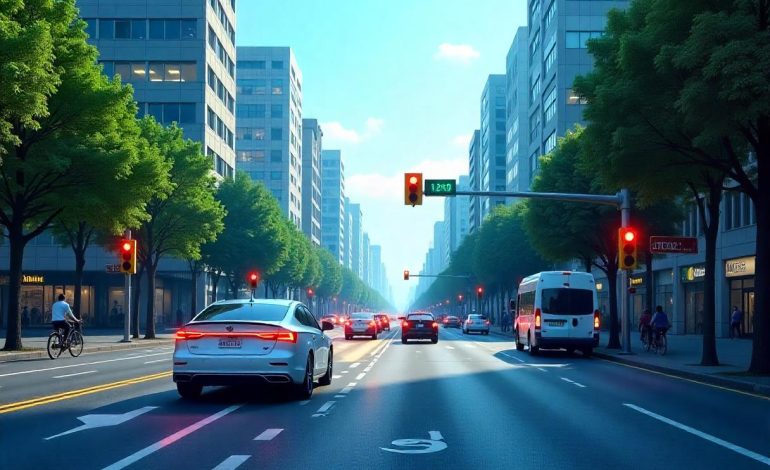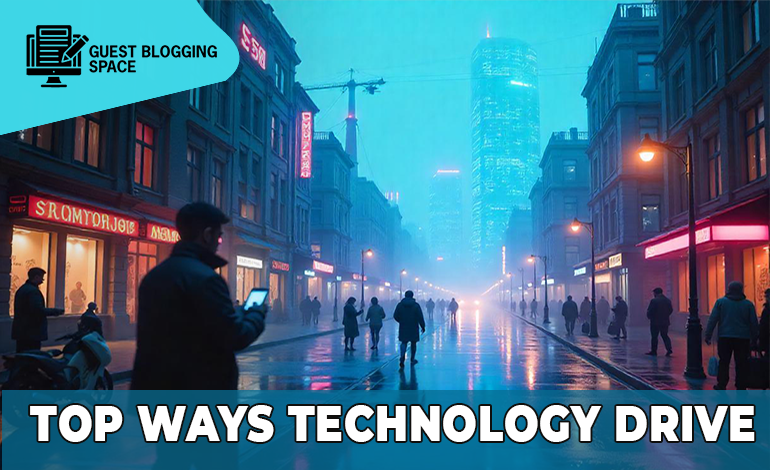Global Traffic Technologies: Smart Solutions & Trends in 2025

Introduction to Global Traffic Technologies
1. What Are Global Traffic Technologies?
Global Traffic Technologies (GTT) refers to innovative systems and solutions designed to manage and optimize traffic flow across cities and regions worldwide. These technologies encompass a variety of tools, including smart traffic lights, sensors, and data analytics, aimed at improving the efficiency and safety of road networks.
In today’s fast-paced world, GTT plays a crucial role in managing congestion, reducing travel time, and minimizing accidents. By utilizing real-time data and artificial intelligence, these technologies ensure smoother traffic operations, even in densely populated urban areas.
The global impact of these technologies is profound, helping cities around the world tackle the challenges of increasing vehicle numbers, urbanization, and environmental concerns. GTT solutions not only improve daily commutes but also contribute to sustainability by reducing carbon footprints and enhancing the quality of life for millions. As the world embraces advancements in various fields, technologies like deep offshore systems, which are revolutionizing energy production, as discussed in this article, play a crucial role in supporting sustainable development.
2. Role of Traffic Technologies in Urbanization and Infrastructure Development
As cities grow, traffic technologies play a key role in shaping smarter urban environments. These innovations enhance transportation infrastructure by improving traffic flow, reducing congestion, and boosting safety.
-
How Traffic Technologies Contribute to Smarter Cities
Traffic management systems, using real-time data, adjust signal timings to optimize vehicle movement and minimize delays. Solutions like GTT’s Opticom 360 combine AI and fleet management for better mobility and public safety. Additionally, adaptive systems respond to traffic changes, reducing congestion and lowering emissions by cutting idle times.
-
Influence on Transportation Infrastructure Globally
Globally, traffic technologies improve infrastructure by enhancing efficiency. For instance, Bengaluru is adopting advanced systems to manage congestion, while Tatu City in Kenya uses these technologies to support sustainable urban growth. These solutions help cities meet the demands of urbanization, ensuring safer, more efficient mobility.
II. Types of Global Traffic Technologies
1. Traffic Management Systems
Traffic Management Systems (TMS) are designed to oversee and control traffic flow, aiming to reduce congestion and enhance road safety. They utilize various technologies to monitor traffic conditions and adjust signals accordingly.
-
Intelligent Traffic Management Systems (ITMS)
Intelligent Traffic Management Systems (ITMS) leverage Information and Communications Technology (ICT) to create smarter traffic solutions. By analyzing real-time data, ITMS can optimize traffic signal timings, manage congestion, and improve safety. Components like Automatic Number Plate Recognition (ANPR) and Red Light Violation Detection (RLVD) systems play a crucial role in enforcing traffic laws and ensuring smooth traffic flow.
-
Adaptive Traffic Control Systems (ATCS)
Adaptive Traffic Control Systems (ATCS) dynamically adjust traffic signal timings based on real-time traffic conditions. Utilizing sensors and cameras, ATCS monitors traffic flow and modifies signal phases to alleviate congestion and reduce delays. This adaptability leads to improved traffic efficiency and safety.
-
Centralized vs. Decentralized Traffic Management
In centralized traffic management, a central system oversees and coordinates traffic signals across a wide area, enabling uniform control and efficient data analysis. Conversely, decentralized traffic management involves independent systems at individual intersections, allowing for localized decision-making based on immediate traffic conditions. Each approach has its advantages, and the choice depends on specific urban planning and traffic management objectives.
2. Traffic Monitoring and Surveillance Technologies
Modern traffic management relies heavily on advanced surveillance technologies to ensure road safety and efficient traffic flow.
-
Closed-Circuit Television (CCTV) and Video Analytics
CCTV cameras provide real-time monitoring of traffic conditions, assisting in incident detection and congestion management. When integrated with video analytics, these systems can automatically identify traffic violations, monitor vehicle speeds, and analyze traffic patterns, enhancing responsiveness and operational efficiency.
-
Radar and Infrared Sensors for Traffic Flow Analysis
Radar and infrared sensors are instrumental in assessing traffic flow by measuring vehicle speeds and densities. Radar systems utilize radio waves to detect speed, while infrared sensors use heat signatures to monitor traffic, even in low-visibility conditions. This data aids in adjusting traffic signals and managing congestion effectively.
-
Automatic License Plate Recognition (ALPR) Systems
ALPR technology employs optical character recognition to read vehicle license plates, facilitating functions such as law enforcement, toll collection, and traffic monitoring. By capturing images of license plates and cross-referencing them with databases, ALPR systems can identify stolen vehicles, enforce tolls, and monitor traffic patterns.
The integration of these technologies plays a crucial role in enhancing traffic management systems, contributing to safer and more efficient roadways.
3. Smart Traffic Signals and Adaptive Control Systems
Smart traffic signals utilize advanced technologies to dynamically adjust signal timings based on real-time traffic data. By analyzing current traffic conditions, these systems optimize the flow of vehicles and pedestrians, leading to reduced congestion and enhanced safety. For instance, AI-powered traffic lights can detect cyclists from up to 30 meters away, prioritizing their passage and encouraging more people to cycle.
Benefits for Reducing Congestion and Improving Safety
- Improved Traffic Flow: Adaptive control systems adjust signal timings to current traffic volumes, minimizing delays and smoothing traffic flow.
- Reduced Travel Times: By optimizing signal phases, these systems decrease overall travel times, making commutes more efficient.
- Enhanced Safety: Real-time adjustments help prevent accidents by reducing congestion-related risks and accommodating pedestrian crossings effectively.
- Environmental Benefits: Decreased idling at intersections leads to lower fuel consumption and reduced vehicle emissions, contributing to cleaner air.
Implementing smart traffic signals and adaptive control systems offers significant advantages in managing urban traffic, enhancing safety, and promoting environmental sustainability.
4. Vehicle-to-Infrastructure (V2I) Communication: Enhancing Urban Mobility
Vehicle-to-Infrastructure (V2I) communication refers to the exchange of information between vehicles and road infrastructure, such as traffic signals and signs. This technology plays a crucial role in the development of smart cities by improving traffic flow and safety.
· Significance of V2I in Smart Cities
Incorporating V2I technology into urban environments offers several advantages:
- Optimized Traffic Management: Smart traffic lights adjust their timing based on real-time traffic conditions, reducing congestion and enhancing mobility.
- Enhanced Safety: V2I systems can warn drivers about upcoming hazards, such as red lights or pedestrian crossings, thereby reducing the likelihood of accidents.
Examples of V2I Technology in Use
Several cities have successfully implemented V2I solutions:
- Las Vegas, USA: Audi introduced Traffic Light Information systems, enabling vehicles to receive real-time signal data, enhancing driver awareness and reducing stress.
- Stratford, Canada: Smart parking systems provide real-time information on available parking spaces, improving the parking experience and streamlining management.
These implementations demonstrate the transformative potential of V2I technology in creating safer and more efficient urban transportation systems.
5. Public Transport Technologies: Enhancing Urban Mobility
Advancements in public transport technologies have significantly improved urban mobility, focusing on real-time tracking and smart ticketing solutions.
GPS and Real-Time Tracking for Buses and Trains
Integrating GPS technology into public transportation enables precise tracking of buses and trains, offering passengers accurate arrival times and enhancing operational efficiency. This system reduces wait times and optimizes route management. For instance, Global Traffic Technologies introduced Opticom 360, an AI-powered, cloud-based platform that provides real-time vehicle location data, driver performance analytics, and traffic signal priority control, aiming to streamline city operations and improve situational awareness.
Smart Ticketing and Payment Solutions
Smart ticketing systems revolutionize fare collection by allowing passengers to use contactless cards or mobile applications for seamless payments. This technology not only expedites the boarding process but also reduces operational costs for transit authorities. Cities like Brisbane have implemented such systems, enabling commuters to tap on and off public transport using credit and debit cards or mobile devices, simplifying the travel experience.
These technological innovations are transforming public transportation, making it more efficient, user-friendly, and responsive to the needs of modern urban populations.
6. Environmental Traffic Technologies: Advancements in Sustainable Traffic Systems
Incorporating green technologies into traffic management systems plays a pivotal role in reducing environmental footprints. Innovative solutions such as cool pavements and noise barriers not only enhance traffic efficiency but also promote ecological sustainability.
Cool Pavements: Mitigating Urban Heat Islands
Cool pavements are engineered to reflect more sunlight and trap less heat compared to traditional materials. This enhancement helps lower ambient temperatures, contributing to the reduction of urban heat islands. Studies suggest that increasing the solar reflectance of pavements can lead to measurable decreases in city temperatures, thereby improving air quality and reducing energy consumption for cooling purposes.
Noise Barriers: Addressing Traffic Noise Pollution
Strategically installed noise barriers serve as effective shields against traffic-induced noise pollution. These structures not only block direct sound waves but also influence air pollution dispersion. Research indicates that noise barriers can reduce air pollution concentrations by up to 50% within 15–50 meters downwind, enhancing air quality in nearby communities.
Global Traffic Technologies’ Commitment to Sustainable Solutions
Global Traffic Technologies (GTT) exemplifies a commitment to integrating advanced technologies for environmental sustainability. Their Opticom 360 platform utilizes artificial intelligence to optimize traffic signal priority control, enhancing traffic flow and reducing vehicle emissions. By streamlining fleet management and minimizing idle times, GTT’s solutions contribute to lowering greenhouse gas emissions, aligning with global efforts to combat climate change.
Embracing these environmental traffic technologies signifies a crucial step toward creating smarter, safer, and more sustainable urban environments.
III. Key Players in Global Traffic Technologies
1. Major Companies and Innovators
Prominent entities in traffic technology encompass Siemens AG, Cubic Corporation, and Kapsch TrafficCom. Siemens AG commands a substantial share in intelligent traffic management, offering adaptive control systems and integrated mobility platforms. Cubic Corporation excels in tolling and transit management solutions, emphasizing real-time data analytics. Kapsch TrafficCom is renowned for its road safety technologies, including red light and speed enforcement systems.
Government bodies and international collaborations significantly influence the sector. For instance, Global Traffic Technologies (GTT) collaborates with UK public sector entities, providing Opticom priority control systems to enhance emergency vehicle responsiveness. Additionally, partnerships like that of Jenoptik with Cologne aim to bolster traffic safety through advanced monitoring technologies.
2. Technological Partnerships and Collaborations
Strategic alliances between corporations and governmental agencies are pivotal in advancing traffic systems. Cubic Transportation Systems’ partnership with CVEDIA integrates artificial intelligence to refine traffic management solutions. Similarly, SWARCO’s acquisition of Elmore Group enhances its capability to deliver comprehensive traffic management solutions, including LED traffic lights and maintenance services.
Global initiatives, such as the United Nations’ smart city projects, exemplify international efforts to revolutionize urban traffic infrastructures. These collaborations focus on reducing congestion, enhancing safety, and promoting sustainable transportation through innovative technologies and data-driven strategies
IV. Benefits of Global Traffic Technologies
1. Improved Traffic Flow and Reduced Congestion
Global Traffic Technologies (GTT) enhances traffic management by implementing advanced systems that adjust signal timings based on real-time traffic conditions. This optimization leads to smoother traffic movement, minimizing delays and congestion. For instance, GTT’s Opticom transit signal priority system ensures that transit vehicles receive green lights when needed, maintaining schedules and improving efficiency.
2. Enhanced Road Safety
GTT’s intelligent traffic solutions contribute to road safety by reducing the likelihood of accidents. By optimizing signal timings and providing priority to emergency vehicles, these technologies help prevent collisions and promote safer driving behaviors.
3. Environmental Sustainability
The implementation of GTT’s technologies leads to environmental benefits by reducing fuel consumption and lowering carbon emissions. Efficient traffic flow minimizes idle times, leading to decreased vehicle emissions and supporting sustainable urban planning.
4. Economic Impact
Investing in GTT’s traffic management systems offers economic advantages by reducing operational inefficiencies. Improved traffic flow leads to cost savings for businesses through timely deliveries and reduced fuel expenses. Additionally, cities benefit from decreased congestion-related delays, enhancing overall economic productivity.
V. Global Trends in Traffic Technology
1. Automation and Artificial Intelligence
- AI’s Impact on Traffic Management: Artificial Intelligence enhances traffic systems by analyzing real-time data, optimizing signal timings, and predicting congestion patterns, leading to smoother traffic flow and reduced delays.
- Influence of Autonomous Vehicles: Self-driving cars communicate with infrastructure, adjusting speeds and routes dynamically, which transforms traffic management and improves safety.
2. 5G Networks and IoT Integration
- 5G and Traffic Technologies: The integration of 5G networks with traffic technologies enables high-speed, low-latency communication, supporting real-time data exchange between vehicles and traffic management systems.
- IoT for Smarter Traffic Management: IoT devices collect and share data from vehicles and infrastructure, facilitating adaptive signal control, real-time traffic monitoring, and incident detection, leading to more efficient traffic management.
3. Data-Driven Traffic Solutions
- Role of Big Data and Predictive Analytics: Analyzing large datasets allows for the identification of traffic patterns, prediction of congestion hotspots, and proactive management strategies, enhancing overall traffic efficiency.
- Real-Time Data Applications: Utilizing real-time data from sensors and cameras aids in dynamic traffic signal adjustments, immediate incident response, and improved safety measures, ensuring optimal traffic flow.
VI. Challenges and Limitations
1. High Costs and Initial Investment
Municipalities often face budget constraints hindering the widespread adoption of advanced traffic technologies. Implementing Intelligent Traffic Systems (ITS) necessitates significant financial resources, including infrastructure upgrades and ongoing maintenance expenses. For instance, deploying sensors, cameras, and communication networks requires substantial upfront investments, which can be challenging for cities with limited budgets.
2. Data Privacy and Security Issues
The collection of real-time traffic data raises concerns about surveillance and the security of sensitive information. Ensuring that data is protected from unauthorized access and misuse is crucial. Striking a balance between utilizing data for traffic management and respecting individual privacy rights is essential. Cities must implement robust security measures and establish clear guidelines on data usage to address these concerns.
3. Technological Barriers and Adaptation Issues
Integrating ITS with existing infrastructure can be complex, especially if current systems are outdated or lack compatibility. Challenges include integrating data from diverse sources and ensuring that the network can support increasing bandwidth requirements. Additionally, the digital divide may affect the adoption of advanced technologies, as areas with limited access to technology may struggle to implement ITS effectively.
VII. Case Studies of Global Traffic Technologies in Action
1. Smart Cities Around the World
Cities Implementing Traffic Technologies
Urban centers like Singapore, Barcelona, and Los Angeles have integrated advanced traffic systems to enhance mobility. For instance, Singapore’s Land Transport Authority utilizes sophisticated fleet management solutions, improving public transportation efficiency.
Benefits of Adoption
These technologies streamline traffic flow, reduce congestion, and boost public transit reliability. In Singapore, the implementation of intelligent transport systems has led to increased customer satisfaction and operational efficiency.
2. Success Stories
Intelligent Traffic Systems in Action
In Toronto, Canada, the integration of advanced traffic enforcement systems has significantly improved road safety. Similarly, the Lithuanian Road Administration combined speed enforcement with number plate recognition to enhance civil security and traffic compliance.
Impact on Mobility
These systems effectively reduce traffic violations and enhance overall mobility. For example, Toronto’s adoption of intelligent traffic systems has led to smoother traffic flow and reduced congestion.
3. Lessons Learned
Implementation Challenges
Cities often face challenges such as data privacy concerns and integration complexities when adopting new traffic technologies. Amsterdam, for instance, abandoned its smart traffic light initiative due to privacy and cybersecurity issues.
Overcoming Pitfalls
Addressing these challenges requires transparent data policies, robust cybersecurity measures, and thoughtful integration strategies. Engaging stakeholders and conducting thorough impact assessments can facilitate smoother adoption of traffic technologies.
VIII. The Future of Global Traffic Technologies
1. Next-Generation Innovations
- Autonomous Vehicles and Drones: Autonomous vehicles and drones are poised to transform traffic management by enhancing safety and efficiency through real-time communication with traffic signals.
- Quantum Computing: Emerging technologies like quantum computing hold the potential to revolutionize traffic systems by optimizing traffic flow and reducing congestion.
2. Global Sustainability Goals
- Achieving Climate Targets: Traffic technologies can contribute to global climate objectives by reducing greenhouse gas emissions and promoting sustainable mobility solutions.
- Vision for Sustainable Transport: The goal is to develop efficient, connected, and environmentally friendly transport systems that align with sustainability goals.
3. Collaborations and Innovations to Look Forward To
- Future Partnerships: Anticipated collaborations between technology providers and transportation agencies aim to enhance traffic management and mobility solutions.
- Technological Advancements: Ongoing innovations are expected to improve the efficiency, safety, and sustainability of global traffic systems in the coming decade.
The Global Impact of Traffic Technologies
Advanced traffic technologies significantly enhance road safety, reduce congestion, and lower emissions. For instance, AI-powered traffic lights adjust signals based on real-time data, improving traffic flow and cyclist safety. Similarly, smart road systems equipped with sensors monitor conditions, providing valuable insights for infrastructure improvements. These innovations collectively contribute to more efficient and sustainable urban mobility worldwide.
Why the Future Depends on Smart Traffic Solutions
The evolution of autonomous vehicles relies heavily on intelligent traffic management systems. For example, Canoe’s implementation of a connected vehicle corridor in Michigan demonstrates how smart infrastructure supports autonomous vehicle operations. Moreover, AI-driven platforms can predict traffic patterns and optimize routes, enhancing mobility efficiency. Embracing these technologies is essential for developing transportation systems that are safer, more efficient, and environmentally friendly.
Embracing Modern Traffic Technologies for a Sustainable Future
Investing in advanced traffic technologies is crucial for enhancing road safety, reducing congestion, and promoting environmental sustainability. Global Traffic Technologies’ Opticom system exemplifies how prioritizing emergency vehicles can significantly decrease response times and improve public safety. Similarly, Mio vision’s acquisition of GTT aims to integrate priority control solutions, further advancing intelligent transportation systems. By adopting such innovations, stakeholders can contribute to building smarter, safer, and more efficient transportation networks for the future.









